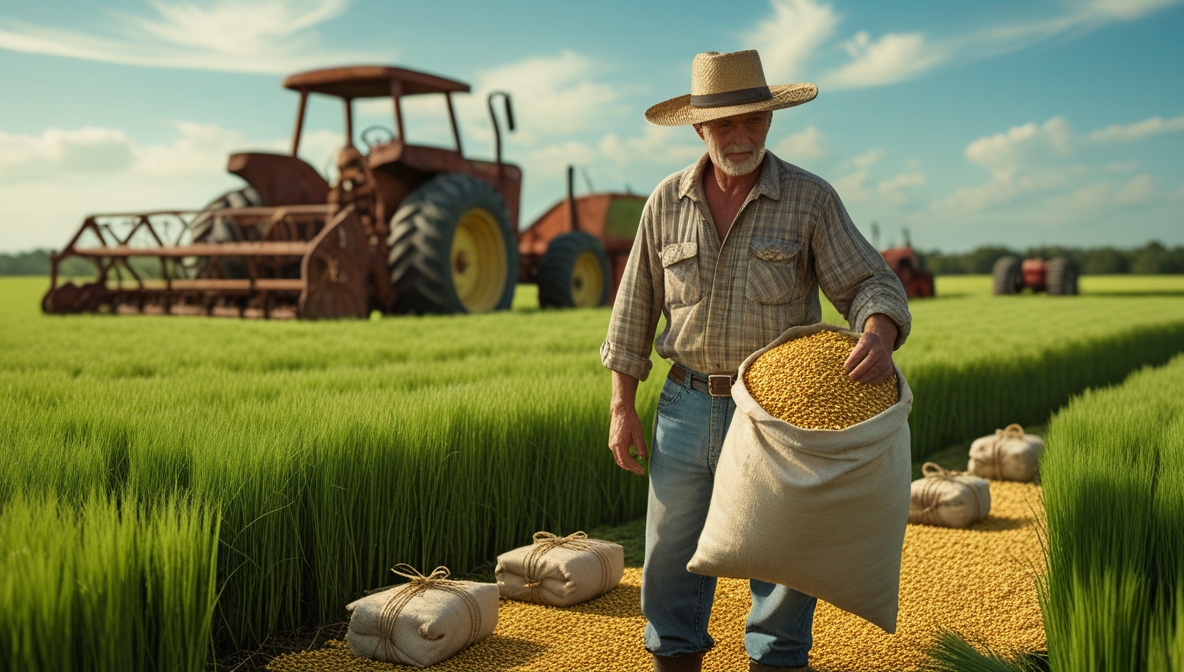Harvesting grass seed might seem like a simple task, but there’s a bit more to it than just snipping off some heads. Knowing when and how to do it ensures you get a good yield of high-quality seed, ready for your next planting season. This guide will walk you through the process from choosing the right grass to storing the precious seed.
Choosing Your Grass Seed
First, you need to identify the type of grass you’re harvesting. Different grasses mature and produce seed at different times. Knowing your grass variety is crucial for timing your harvest correctly. Some grasses will readily seed themselves, while others require more deliberate management. Also consider the quality of the grass plants themselves; healthy, vigorous plants produce better seed. Look for plants that are free from disease and pests.
Different varieties of grass have different characteristics that affect their seed production. Some grasses are known for their dense seed heads, while others produce smaller, less numerous seed. This variation can impact the amount of time required for harvesting and the overall yield. Always research the specific grass you plan to harvest to understand its unique characteristics.
Timing Your Harvest
The perfect time to harvest grass seed is when the seed heads are fully ripe but haven’t yet started to disperse their seeds. This is often a bit tricky to judge, as the seed heads can change color and firmness quickly. Usually, you’ll see the seed heads turning a light brown or tan color, and they should feel dry and brittle.
If you’re unsure, gently shake a seed head. If the seeds readily fall out, it might be too late. Aim to harvest before this happens to avoid losing seed. Different types of grasses have different ideal harvest times. If you’re unsure, consult seed catalogs or online resources for specific guidance based on your region and grass type.
Gathering the Seed Heads
Once you’ve identified the ideal time, you can start gathering the seed heads. Use sharp scissors or clippers to cut the seed heads off from the plant stems, being careful not to damage the plant or the seed heads. Avoid tearing or breaking them. Collecting the seed heads in a bag or container is crucial to prevent seed loss.
A good technique is to cut the entire seed head, rather than just individual florets. This allows for easier handling and helps preserve the integrity of the seed. Be meticulous in collecting seed heads, as you need a good amount to have a substantial harvest. Don’t be afraid to collect more than you think you’ll need, especially if you’re new at this. Plenty of extra seed is always better than not having enough!
Drying and Storing
After harvesting, you need to dry the seed heads to separate the seeds from the plant material. This is important for preventing mold and mildew. Lay the seed heads out in a single layer on a dry, well-ventilated surface, like a screen or tarp, in a shady area. Avoid direct sunlight, as this can cause the seeds to overheat and dry too quickly.
Storing the dried seeds properly will ensure their viability for future use. Place the seeds in airtight containers or bags and store them in a cool, dry, and dark place. Keep them away from moisture and pests. Label the containers clearly with the type of grass and the date of harvest. This will help you track the best time to plant the seeds.
Harvesting grass seed can seem daunting, but by following these steps, you can successfully collect and store seed for your own use. Taking your time and being meticulous throughout the process will result in a healthy and robust harvest that will benefit your garden for years to come. Remember to research your specific grass type for the best results.






